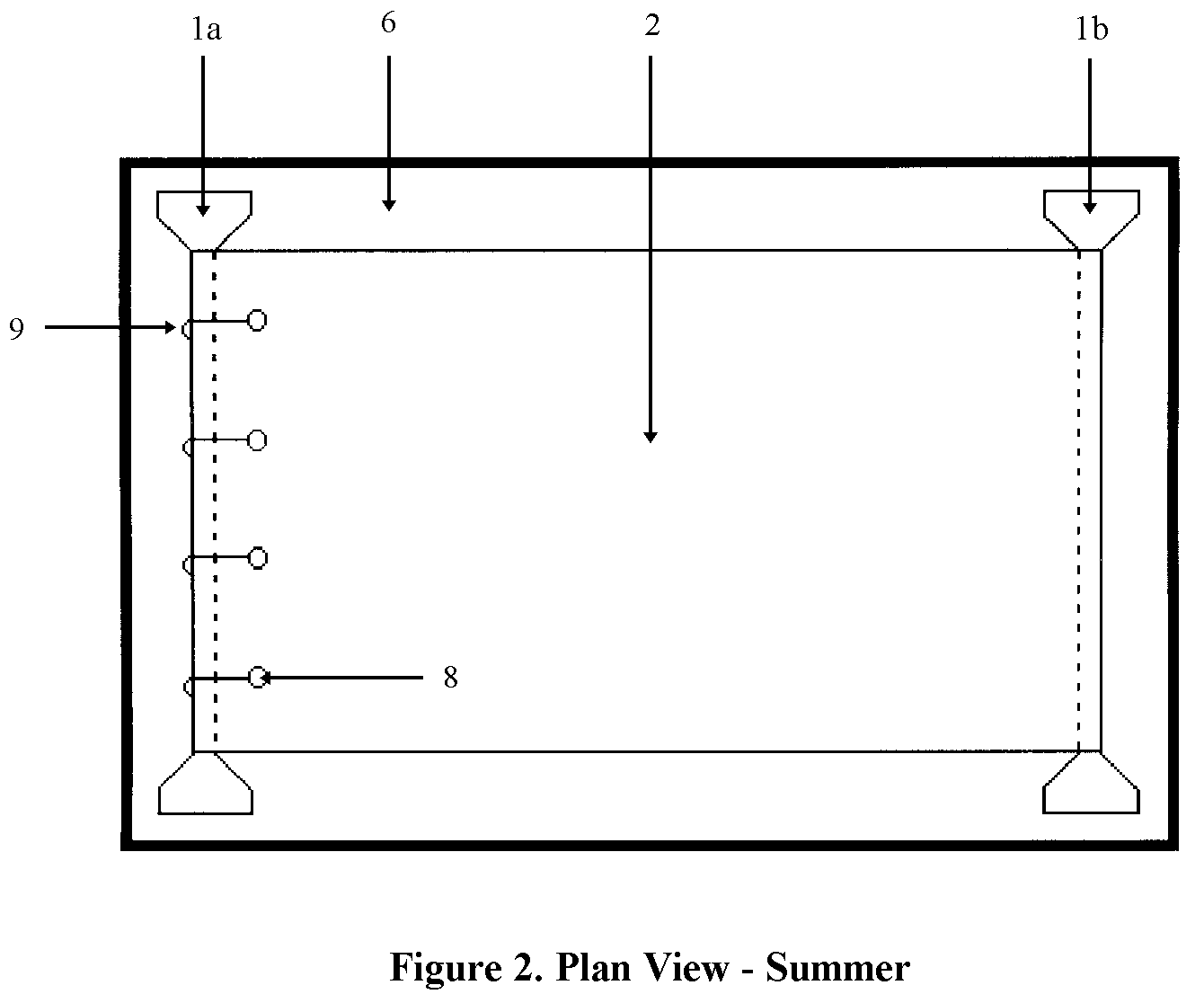Cost-effective Energy Conservation System
a technology of energy conservation and energy saving, applied in sustainable buildings, lighting and heating equipment, heating types, etc., can solve the problems of reducing cooling energy bills, energy conservation, dark roof shingles, etc., and achieves the effects of preventing heat buildup in the attic, reducing energy consumption, and absorbing solar hea
- Summary
- Abstract
- Description
- Claims
- Application Information
AI Technical Summary
Benefits of technology
Problems solved by technology
Method used
Image
Examples
Embodiment Construction
[0012]FIGS. 1 and 2 illustrate the end result after the present system has successfully operated and completely covered the roof. FIGS. 3 and 4 illustrate when the roof is completely uncovered. The numbering system used to identify entities is consistent across all the figures.
[0013] As shown in FIGS. 1 and 2, rollers 1a and 1b shaped like dumbbells and running along the complete length of a section of the roof 6, are first mechanically mounted at two endpoints on the corresponding roof section. Such roller pairs can be mounted on as many roof sections as is deemed necessary by the user. The reflective cloth-like material 2 (in FIG. 1 and 2) is wound around roller 1b. This cloth-like covering material has eyelets 8 at one end along its edge to which strings 9 are attached as shown in FIG. 2. The strings get wound around roller 1a. Both the rollers 1a and 1b are operated by small motors 5b and 5a respectively. These motors can either be manually operated or connected to a thermostat...
PUM
 Login to View More
Login to View More Abstract
Description
Claims
Application Information
 Login to View More
Login to View More - R&D
- Intellectual Property
- Life Sciences
- Materials
- Tech Scout
- Unparalleled Data Quality
- Higher Quality Content
- 60% Fewer Hallucinations
Browse by: Latest US Patents, China's latest patents, Technical Efficacy Thesaurus, Application Domain, Technology Topic, Popular Technical Reports.
© 2025 PatSnap. All rights reserved.Legal|Privacy policy|Modern Slavery Act Transparency Statement|Sitemap|About US| Contact US: help@patsnap.com



